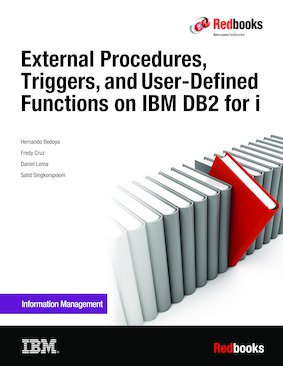I tried create this function with DB2 Express and received the error
message:
-104
Thiago.FUNCTION 1: 9: [IBM][CLI Driver][DB2/NT] SQL0104N An inexpected
token "TABLE SESSION.TESTE(C 1 INTEGER) ON CO" was found following
"ARE GLOBAL TEMPORARY". Expected tokens may include: "<space>". LINE
NUMBER=9. SQLSTATE=42601
CREATE FUNCTION THIAGO.FUNCTION 1( )
RETURNS TABLE (C1 INTEGER)
------------------------------------------------------------------------
-- SQL UDF (Table)
------------------------------------------------------------------------
MODIFIES SQL DATA
BEGIN ATOMIC
DECLARE GLOBAL TEMPORARY TABLE SESSION.TESTE(C 1 INTEGER)
ON COMMIT DELETE ROWS WITH REPLACE NOT LOGGED;
insert into SESSION.TESTE select count(*) from SYSCAT.FUNCTION S
RETURN SELECT C1 from SESSION.TESTE
END
Is some incorrect?
Thanks
message:
-104
Thiago.FUNCTION 1: 9: [IBM][CLI Driver][DB2/NT] SQL0104N An inexpected
token "TABLE SESSION.TESTE(C 1 INTEGER) ON CO" was found following
"ARE GLOBAL TEMPORARY". Expected tokens may include: "<space>". LINE
NUMBER=9. SQLSTATE=42601
CREATE FUNCTION THIAGO.FUNCTION 1( )
RETURNS TABLE (C1 INTEGER)
------------------------------------------------------------------------
-- SQL UDF (Table)
------------------------------------------------------------------------
MODIFIES SQL DATA
BEGIN ATOMIC
DECLARE GLOBAL TEMPORARY TABLE SESSION.TESTE(C 1 INTEGER)
ON COMMIT DELETE ROWS WITH REPLACE NOT LOGGED;
insert into SESSION.TESTE select count(*) from SYSCAT.FUNCTION S
RETURN SELECT C1 from SESSION.TESTE
END
Is some incorrect?
Thanks

Comment